Engagement and Access
Innovative Approaches for Museums
About the Series
The Innovative Approaches for Museums series offers case studies, written by scholars and practitioners from museums, galleries, and other institutions, that showcase the original, transformative, and sometimes wholly re-invented methods, techniques, systems, theories, and actions that demonstrate innovative work being done in the museum and cultural sector throughout the world. The authors come from a variety of institutionsin size, type, budget, audience, mission, and collection scope. Each volume offers ideas and support to those working in museums while serving as a resource and primer, as much as inspiration, for students and the museum staff and faculty training future professionals who will further develop future innovative approaches.
About the Series Editor
Juilee Decker is an associate professor of Museum Studies at Rochester Institute of Technology (RIT) where she teaches courses focusing on museums and technology so as to bring theory and praxis together in the classroom environment. She has worked as a public art consultant and advisor for more than 15 years and has managed several public and private collections of public art. Since 2008, she has served as editor of Collections: A Journal for Museum and Archives Professionals , a peer-reviewed journal published by Rowman and Littlefield.
Titles in the Series
Technology and Digital Initiatives: Innovative Approaches for Museums
Engagement and Access: Innovative Approaches for Museums
Collections Care and Stewardship: Innovative Approaches for Museums
Fundraising and Strategic Planning: Innovative Approaches for Museums
Engagement and Access
Innovative Approaches for Museums
Edited by Juilee Decker
ROWMAN & LITTLEFIELD
Lanham Boulder New York London
Published by Rowman & Littlefield
A wholly owned subsidiary of The Rowman & Littlefield Publishing Group, Inc.
4501 Forbes Boulevard, Suite 200, Lanham, Maryland 20706
www.rowman.com
Unit A, Whitacre Mews, 26-34 Stannary Street, London SE11 4AB
Copyright 2015 by Rowman & Littlefield
All rights reserved . No part of this book may be reproduced in any form or by any electronic or mechanical means, including information storage and retrieval systems, without written permission from the publisher, except by a reviewer who may quote passages in a review.
British Library Cataloguing in Publication Information Available
Library of Congress Cataloging-in-Publication Data
Engagement and access : innovative approaches for museums / Juilee Decker.
pages cm. (Innovative approaches for museums)
Includes bibliographical references and index.
ISBN 978-1-4422-3875-6 (pbk. : alk. paper) ISBN 978-1-4422-3876-3 (electronic) 1. Museums and community. 2. MuseumsTechnological innovations. 3. Museum techniques. 4. MuseumsEducational aspects. I. Decker, Juilee, editor.
AM7.E54 2015
069dc23
2015009773
 The paper used in this publication meets the minimum requirements of American National Standard for Information SciencesPermanence of Paper for Printed Library Materials, ANSI/NISO Z39.48-1992.
The paper used in this publication meets the minimum requirements of American National Standard for Information SciencesPermanence of Paper for Printed Library Materials, ANSI/NISO Z39.48-1992.
Printed in the United States of America
Contents
Introduction
In January 2014, when I most recently led a study abroad course on the history and theory of museums, sixteen college students and I gathered in Room 41 of the British Museum to see the gift of Mrs. E. M. Pretty. I was prepared to give time for the students to read the didactic panels quietly before gathering everyone into a circle to have an impromptu discussion on how we can relate to these items recovered from a mound called Sutton Hoo (now Suffolk, England) fifteen hundred years after their creation. I did not want the objectsparticularly the purse cover, one of the first items I had learned in an art history survey course many years agoto go unobserved, unnoticed, uncontemplated.
Fortunately, the British Museum anticipated my concern. Here we stood in a room boasting a hands-on desk. I couldnt believe my eyes: a knowledgeable, enthusiastic volunteer gave us the unique opportunity to handle objects from the collection (not from Sutton Hoo, but from the Anglo-Saxon period no less). An elderly woman, our guide showed us how to handle the gold ingot and engaged us in discussions about the object and the cultures it represented. This is access on an unprecedented level. But the program was not new. In fact, the British Museum has been running this program for more than a decade. A visitor studies report from Morris Hargreaves McIntyre (2008) noted the successes of the program, remarking that these desks attract the attention of more families than the British Museum does overall ; that 94 percent of the visitors decided to stop at the desks incidentally; and that 96 percent of the visitors to these spaces said that the experience increased the quality of their visit and brought it to life.
Visitors are attracted to the desk, the objects displayed for handling, and the galleries boasting such desks. Visitors engage with collections and, in turn, they gain from this experience just as my students and I did. On our visit, students were texting, posting, tweeting, and otherwise sharing with their friends and family back home the object that laid in their hands. They experienced it in a tactile way and they wanted to share that experience with all their followerseverywhere.
Engagement and Access: Innovative Approaches for Museums reveals the ways in which museums have designed experiences to engage with their audiences and to provide opportunities for their audiences to engage with them. The idea of engagement in the museum context is not entirely new, of course, as founding impulses of museums centered on social interaction, connection, and engagement with the public, although the definition of engagement has changed over time. In the twenty-first century, we are engaging with objects, content, and context in more social and participatory ways. What environments promote the best forms of engagement? To what extent should authenticity and engagement be opposed? What do we as visitors expect from museum experiences that we undertake? What do museums offer us? Beyond the ability to hold a gold ingot, how can we engage with collections?
About the Innovative Approaches for Museums Series
This series offers case studies, written by scholars and practitioners from museums, galleries, and other institutions, that showcase the original, transformative, and sometimes wholly reinvented methods, techniques, systems, theories, and actions that demonstrate innovative work being done in the museum and cultural sector throughout the United States and in England, Australia, and Peru. The authors come from a variety of institutionsin size, type, budget, audience, mission, and collection scope. Their geographical, authorial, and institutional diversity was an intentional part of crafting of this series as a means of offering a range of perspectives on issues confronting museums, and collecting institutions at large in some cases, that may be replicated entirely or scaled up or down by colleagues elsewhere.
Each chapter carefully examines a core issue by describing background information before turning to the identification of the problem, a solution to the issue, implementation, results, feedback, and assessment as well as next steps. Many chapters are enhanced with notes and/or resources to point the reader to contextual and additional information. Written with attention to the audience of peers and colleagues-in-training, each chapter is intended to offer ideas and support to those working in museums while serving as a resource and primer, as much as inspiration, for students and the museum staff and faculty training future professionals who will further develop future innovative approaches.
Next page
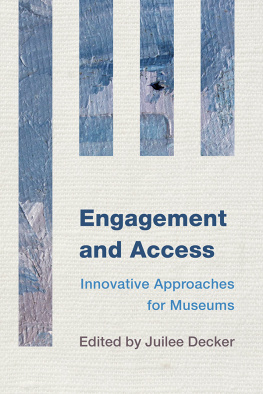
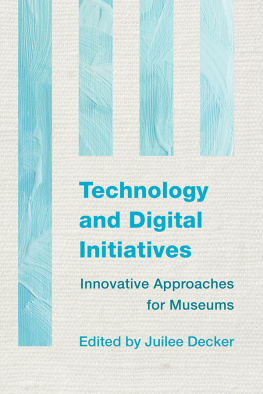
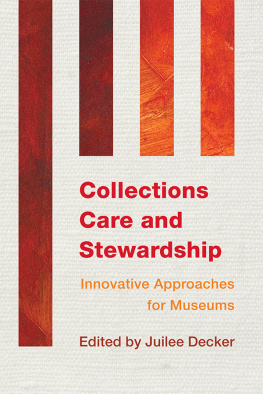
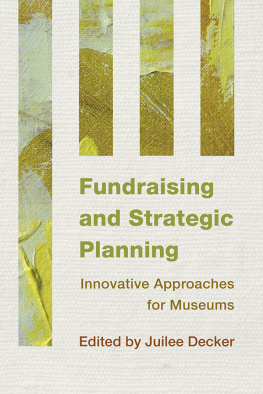

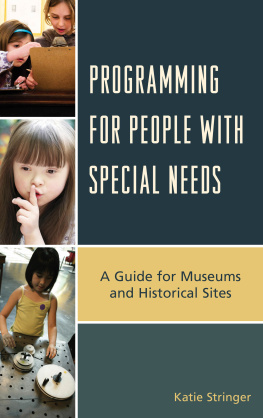
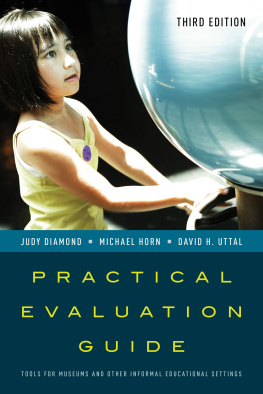
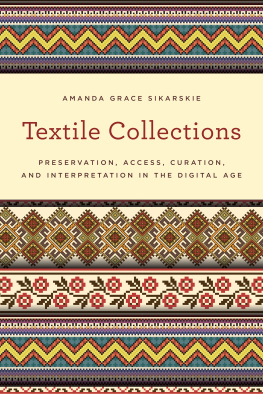

 The paper used in this publication meets the minimum requirements of American National Standard for Information SciencesPermanence of Paper for Printed Library Materials, ANSI/NISO Z39.48-1992.
The paper used in this publication meets the minimum requirements of American National Standard for Information SciencesPermanence of Paper for Printed Library Materials, ANSI/NISO Z39.48-1992.